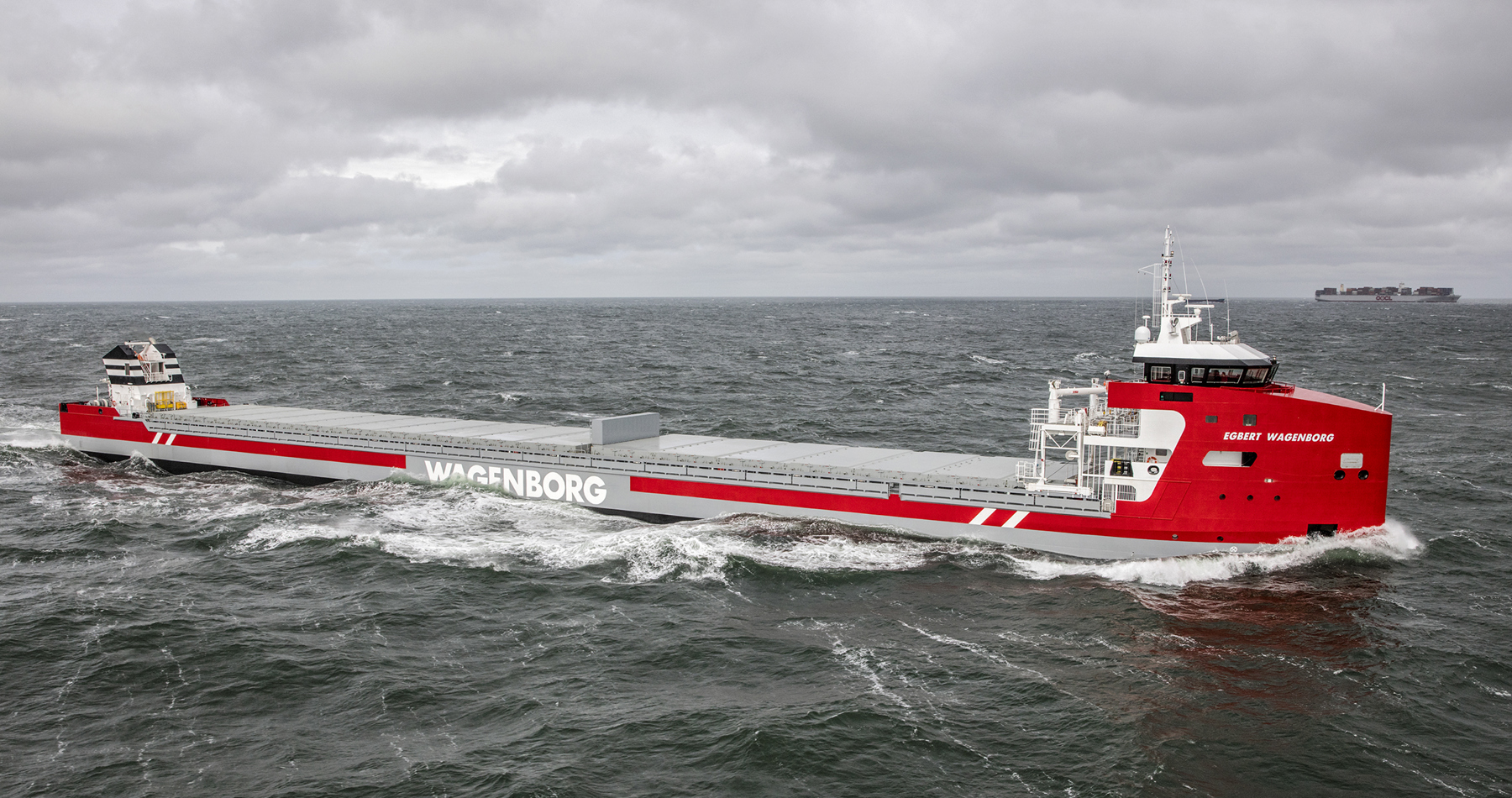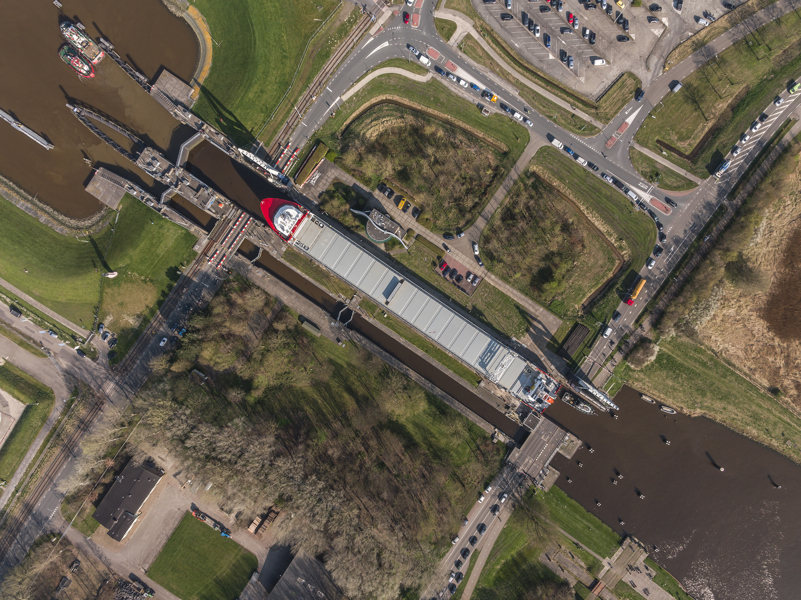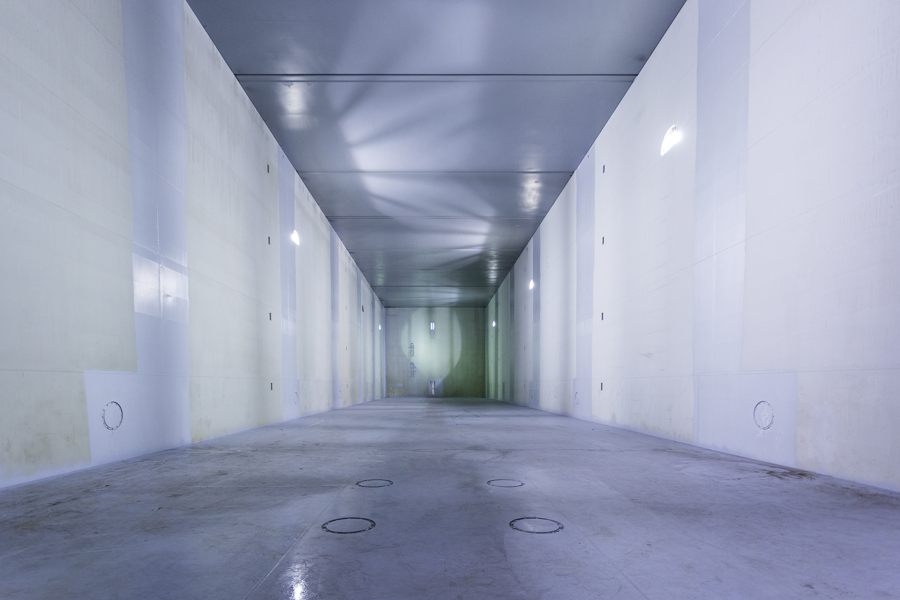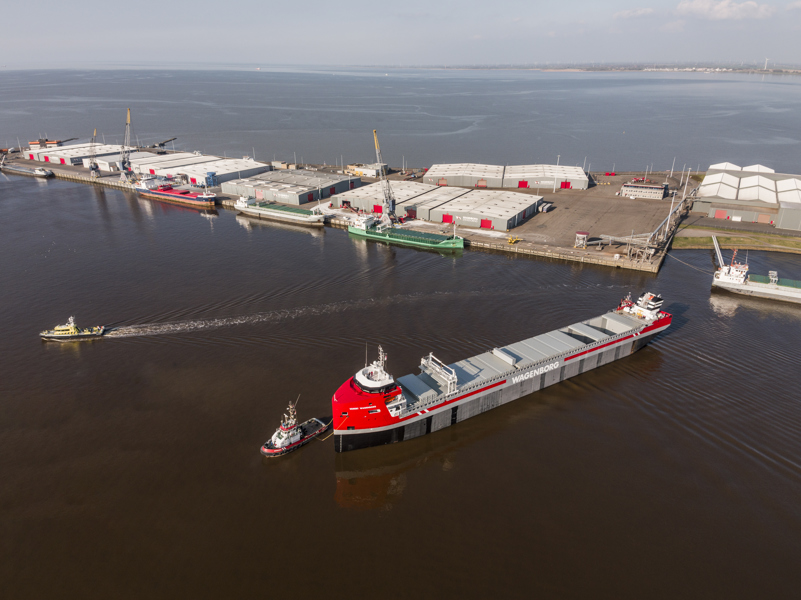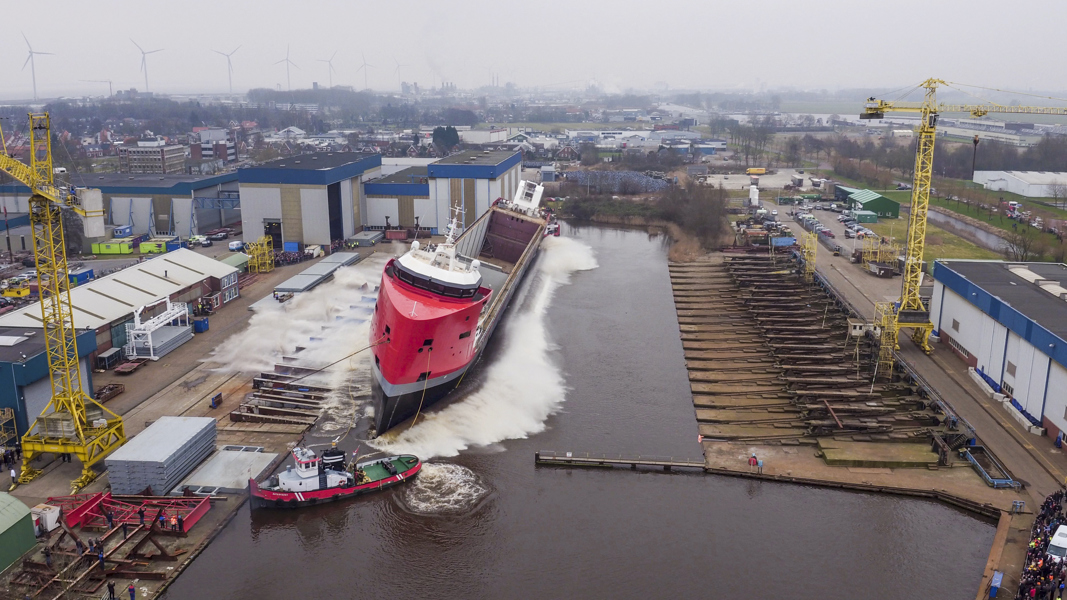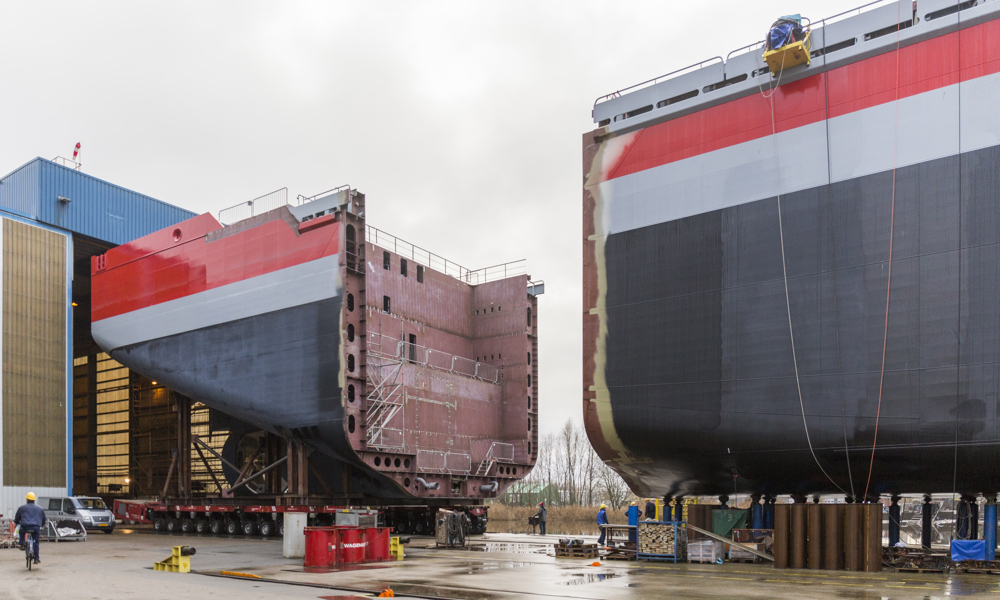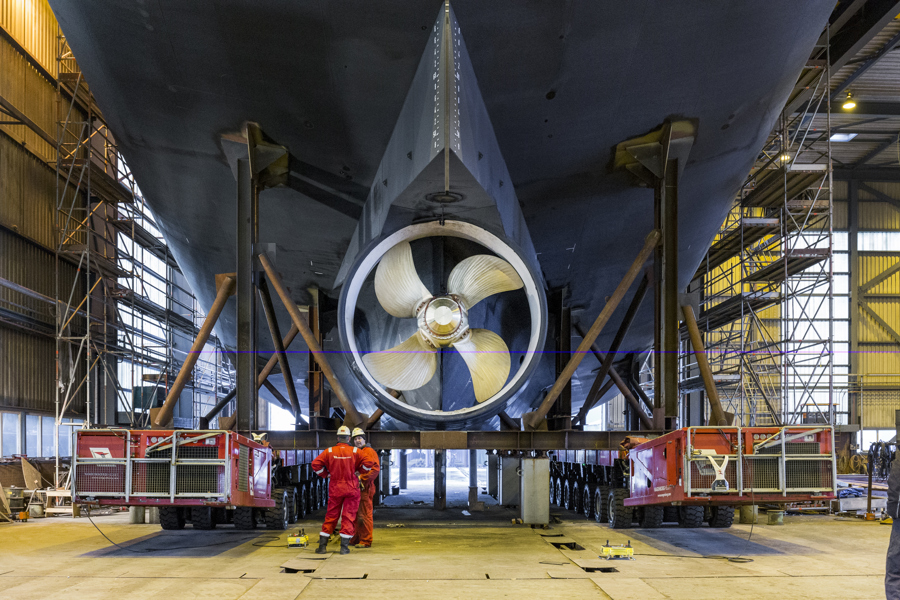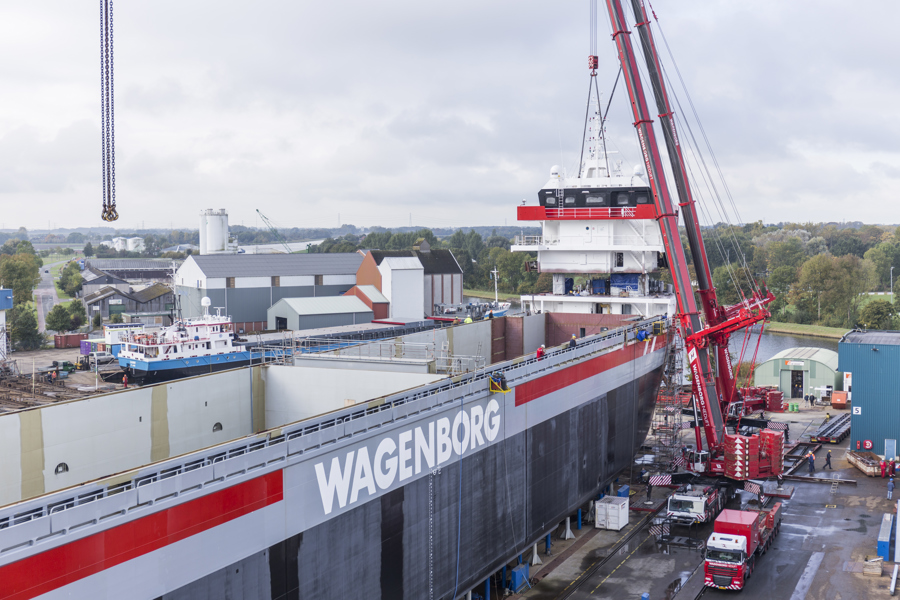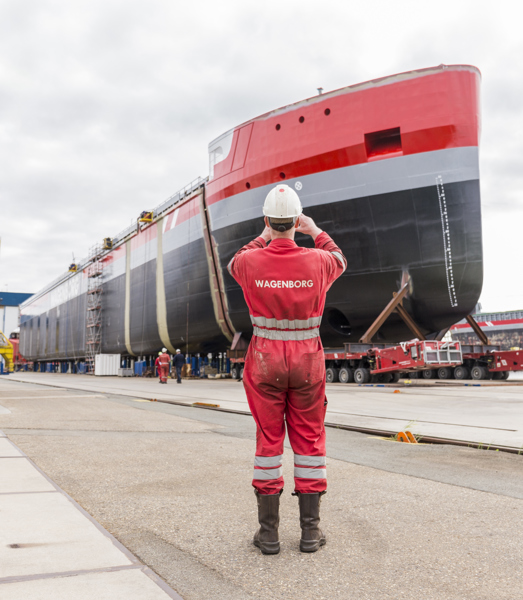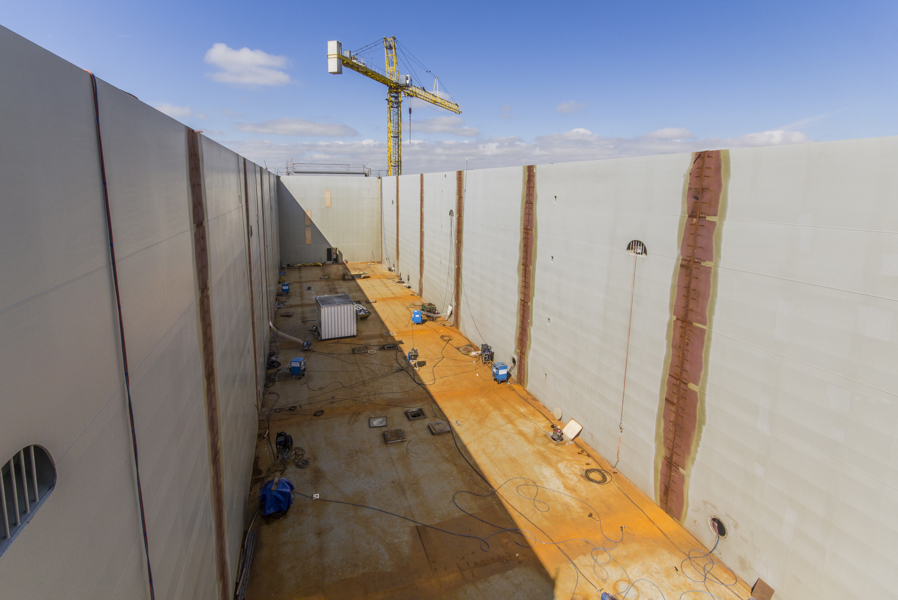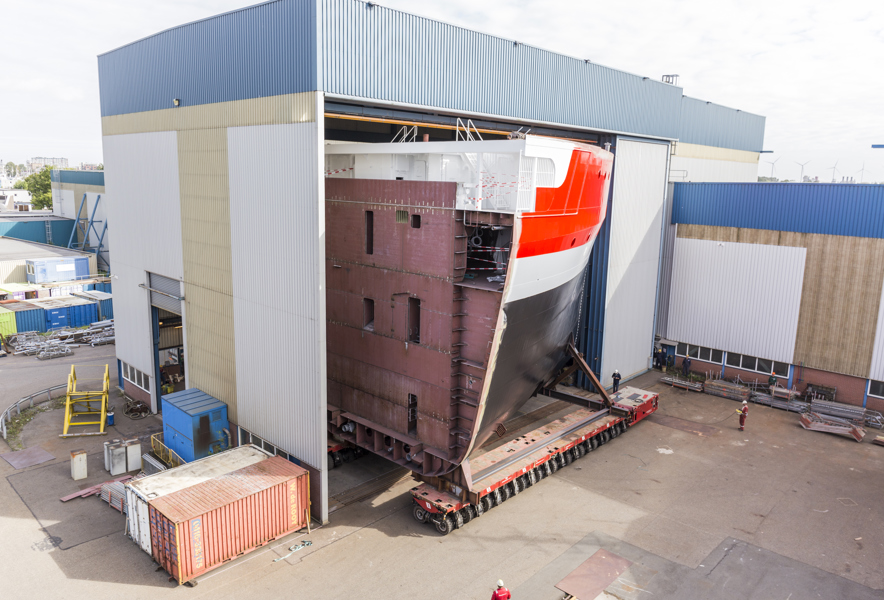It’s time to introduce the “EasyMax”. The EasyMax is an open-top multi-purpose ice-classed vessel with a load capacity of 14,200 tonnes and a hold volume of 625,000 cubic feet. The combination of that large load capacity and very low fuel consumption makes this Wagenborg vessel a leader in its segment in terms of sustainability.
Maximum dimensions and load capacity
With a load capacity of 14,200 tonnes and a hold volume of more than 625,000 cft, the EasyMax is the biggest ship ever built in the north of the Netherlands on the landward side of the dikes. With a length of 149.95m, a beam of 15.90m and a draught of 8.60m, the EasyMax has the maximum possible dimensions for the Royal Niestern Sander shipyard. With two large rectangular holds – 13.50m wide, 12.10m high, and 47.36 and 64.38m long, respectively – the EasyMax excels in her class with her very high capacity for heavy or light cargo, timber and paper, and open-top loading. This allows for maximum deployment in Wagenborg’s operating area. The EasyMax is suitable for worldwide commercial operations, including in such areas as the Baltic, the North Sea, the Mediterranean, the St Lawrence Seaway, the Panama Canal, and the Suez Canal.
Low fuel consumption
With the EasyMax, Wagenborg has a relatively large vessel in terms of cargo intake and hold capacity but without any major increase in overall dimensions or tonnage. In addition, the combination of main engine, gearbox, propeller, and thruster means that the “EasyMax” has an energy-efficient propulsion system, leading to extremely low fuel consumption. The hull shape has also been optimised for various different draughts, resulting in an ultra-low Energy Efficiency Design Index (EEDI).
Bridge and accommodation positioned forward
Unlike the great majority of the Wagenborg fleet, the “EasyMax” has her bridge and accommodation positioned close to the bows (“for’ard”) in the ship. One of the principles for her design was to have maximum dimensions and capacity in two rectangular holds. Positioning the accommodation in the fore part of the ship – where much of the shape is located that is needed for low fuel consumption – creates greater hold volume in the aft section and on deck. It also reduces the overall tonnage. Another advantage is that there are no line-of-sight restrictions as regards deck cargo and open-top cargo. As a result, the accommodation can be situated on deck lower. Yet another advantage is that the centre of gravity is lowered, which improves the stability of the ship and hence her load capacity. Finally, the lower accommodation construction creates an aerodynamic shape with lower resistance, for example to the wind, and reduced fuel consumption.
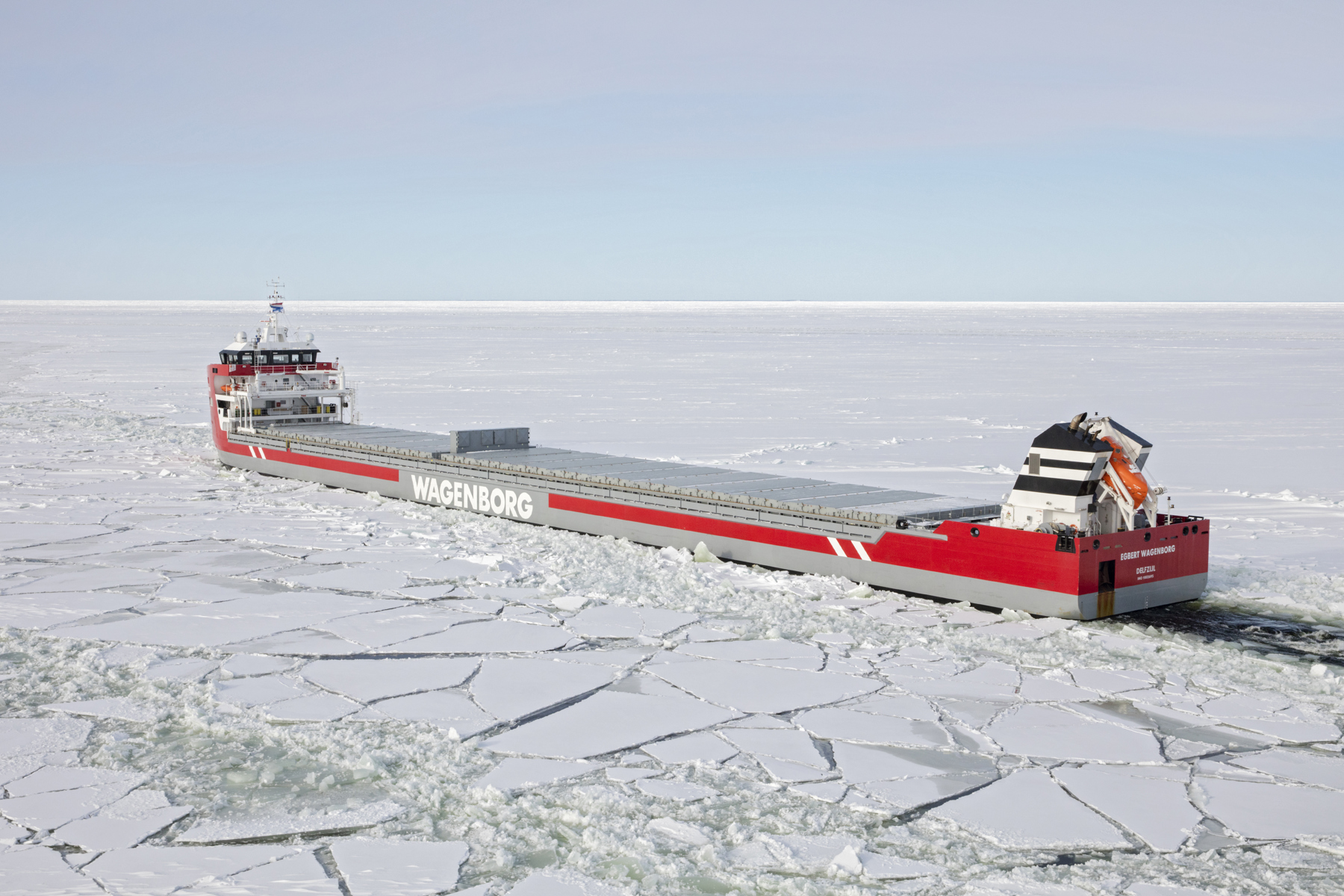
Easy to build and operate
The design of the EasyMax means that there is only a limited amount of equipment in the hold. For example, there are no tweendecks, container fittings, securing eyes, or girders in the hatch package. For most of the cargoes that Wagenborg transports, these options are unnecessary. There are, however, separation bulkheads, dehumidifiers, and hold lighting. The bottom line is a cheaper and lighter vessel that is easy to operate and maintain.
Comfort on board
Besides the needs of our clients, a high standard of comfort for the crew is also an important principle of the design. Positioning the accommodation in the fore part of the ship and the engine room aft means that the noise level in the modern cabins is very low. There’s a large exercise room and a spacious day and mess room, so the ship has a comfortable working and living environment. For the areas where the crew work, a great deal of design attention was paid – in consultation with users – to ergonomics, safety, technology, and layout. One good example of this is the new AlphaBridge, with its 360° view. Another is the hold entrance in the area between the two holds, or the access from the accommodation to the hatch crane. The ship also has a good satellite connection for on-board TV and Internet, allowing the crew to communicate with their people back home. The Internet connection also allows the equipment to be read remotely from on shore, making possible more efficient maintenance and support. In that context, innovative applications have also been implemented that contribute to the level of on-board safety, such as the alarm, radar, ECDIS, and CCTV screen that can be displayed both on board and back on shore.
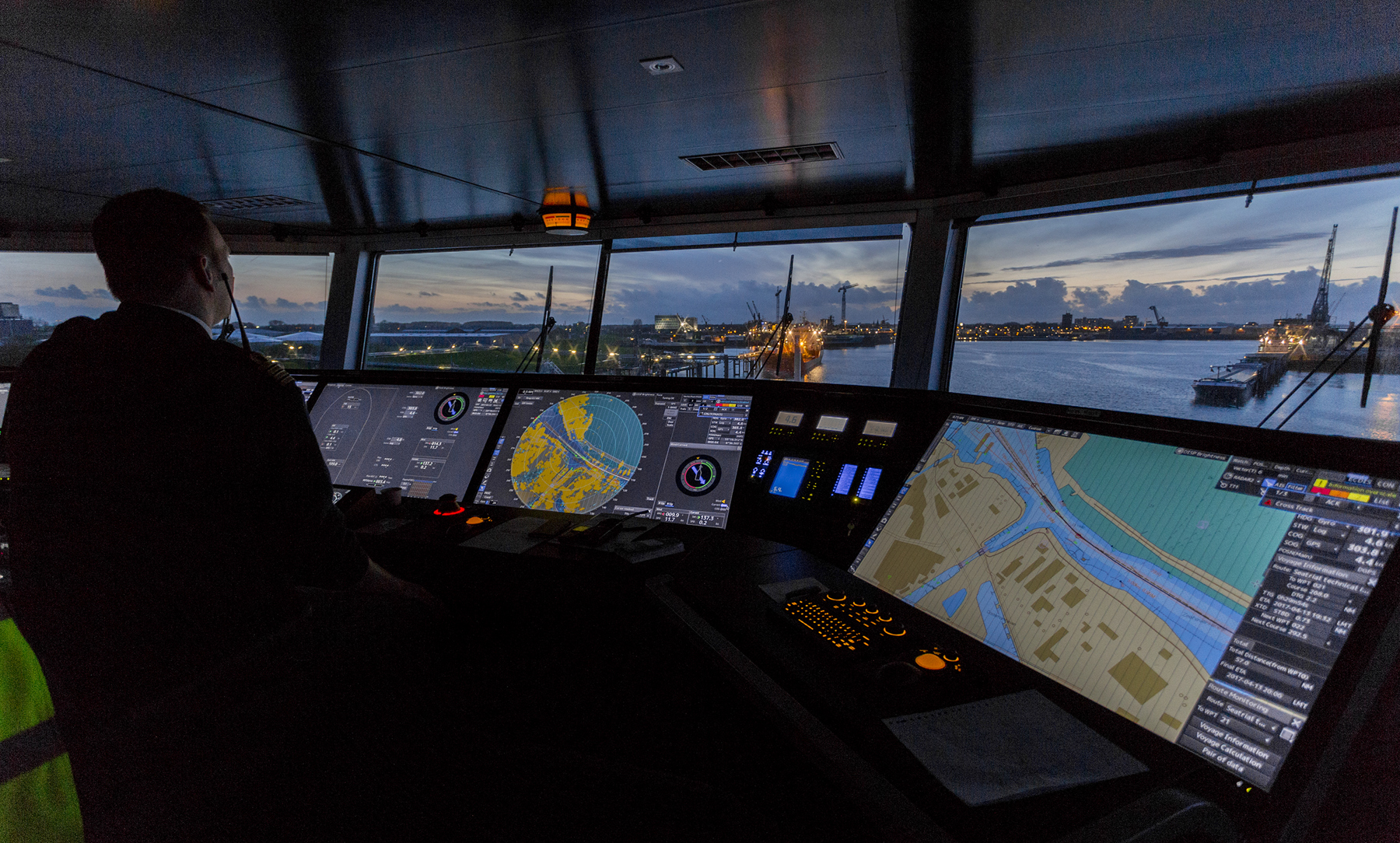
A boost for the North
As a “recognised training company”, the Niestern Sander shipyard trains a lot of young people from Groningen and Drenthe, for example, graduates of the metal and shipbuilding programme in Groningen. The whole region, therefore, benefits from this project. Niestern Sander works with many local subcontractors and suppliers. This has been a great boost for employment in the north of the Netherlands.
